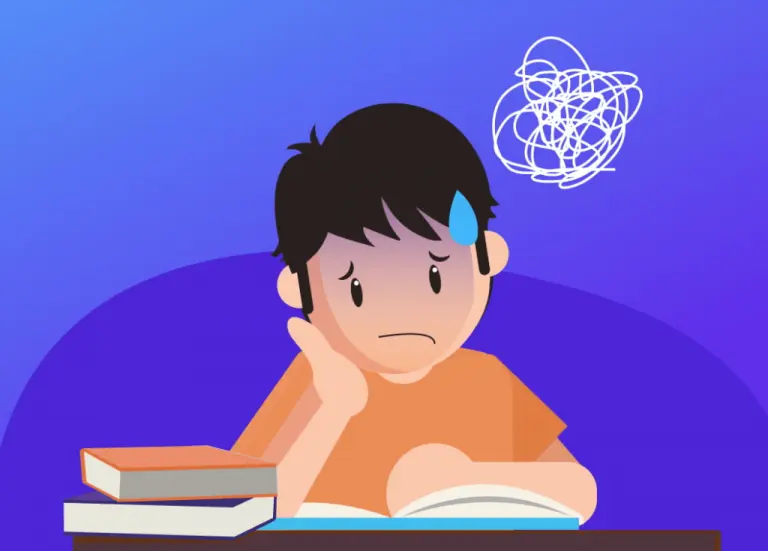Reading & comprehension are foundational skills that shape a child’s ability to learn, communicate, and succeed in life. For teachers and parents, fostering these skills is one of the most rewarding ways to empower young learners. Whether you’re guiding students in a classroom or helping your child with homework, understanding how to build strong reading & comprehension habits is key to their academic and personal growth.
In this article, we’ll unpack the essentials of reading and comprehension, effective strategies and techniques tailored for educators and parents to help children improve their reading comprehension. From identifying challenges to using practical resources, this guide is your partner in nurturing confident and capable readers.
What is the Meaning of Reading & Comprehension?
At its core, reading is the ability to decode written text by recognizing words and understanding their basic meaning. Comprehension, on the other hand, goes a step further, involving the process of interpreting, analyzing, and drawing meaning from what has been read. While reading is about recognizing words on a page, comprehension ensures the reader understands the context and can apply the information.
When children truly comprehend what they read, they aren’t simply absorbing words on a page – they’re engaging in an active, dynamic process that transforms reading into meaningful understanding. As teachers and parents, understanding this process can help you guide children to become confident and thoughtful readers.

Reading comprehension involves several critical skills:
- Connecting new information with existing knowledge: Children link what they read to their prior experiences, helping the text feel relevant and meaningful.
- Visualizing concepts and scenarios: They create mental images that bring the story or information to life.
- Making predictions: By anticipating what might come next, they engage with the text in a more thoughtful way.
- Drawing conclusions: Children learn to analyze evidence and form logical interpretations.
- Evaluating the author’s message and purpose: They assess the underlying meaning or intent behind the text.
- Storing information for future recall and application: Comprehension ensures the retention of ideas and facts that they can use later.
Think of reading comprehension as crafting a mental movie. Just as a director orchestrates visuals, dialogue, and emotion to tell a story, children combine words, context, imagination, and their own knowledge to form a rich, complete understanding of what they’re reading.
The Significance of Reading & Comprehension
Strong reading & comprehension skills are foundational for success in every aspect of life, from academic achievements to professional growth and personal development. These skills are not just about understanding words on a page; they empower individuals to engage with the world more effectively.
Academic Success
In the classroom, reading comprehension is paramount. Students need to understand textbooks, comprehend lectures, and analyze complex information to succeed academically. Strong comprehension skills enable students to grasp key concepts, complete assignments effectively, and excel in exams.
A 2023 study by the NCES found a strong correlation between reading comprehension and academic performance across all subjects. Students with strong comprehension skills were more likely to graduate high school and pursue higher education.
Professional Success
In the workplace, strong reading comprehension is vital for success in various roles. It allows professionals to understand complex reports, interpret contracts, communicate effectively with colleagues, and stay informed about industry trends. Comprehension also supports critical decision-making, problem-solving, and the ability to adapt to new information or challenges – skills that are highly valued by employers.

Critical Thinking
Reading exposes us to diverse perspectives and challenges our assumptions. By actively engaging with text, we learn to analyze information, evaluate arguments, and form our own well-informed opinions. This critical thinking is essential for navigating a complex world and making sound decisions.
Lifelong Learning
In today’s rapidly changing world, the ability to learn independently is crucial. Strong reading comprehension empowers individuals to acquire new knowledge, explore new subjects, and adapt to new situations.
Whether it’s learning a new skill, researching a topic, or simply staying informed about current events, reading comprehension is the key to lifelong learning.
Effective Communication
Reading widely exposes us to different writing styles, vocabulary, and communication techniques. This broadens our own communication skills, improving our writing, speaking, and even our ability to understand and interpret nonverbal cues.
Increased Enjoyment of Reading
When you can truly understand and appreciate what you’re reading, the experience becomes much more rewarding. You can delve deeper into the story, connect with the characters, and savor the beauty of the language.

Common Challenges in Reading & Comprehension
Reading & comprehension are essential skills, but many individuals face challenges that hinder their progress. Identifying these issues is the first step in addressing them effectively. Below are some common problems and how they manifest in different groups.
Lack of Focus or Concentration
In today’s fast-paced world, distractions abound. For children, short attention spans can make it hard to stay engaged with a text. Adults, especially those balancing work and family, might find it difficult to concentrate on reading for extended periods. This lack of focus prevents readers from fully understanding or retaining the material.

Difficulty Understanding Complex Texts
Complex texts, such as academic papers or literary works, can be overwhelming for many readers. This challenge is particularly pronounced in students who are transitioning to higher levels of education where reading materials become more advanced. Without guidance, they may struggle to decode and comprehend such texts.
Limited Vocabulary
A limited vocabulary is a significant barrier to comprehension. Readers who frequently encounter unfamiliar words may find it challenging to grasp the overall meaning of a text. This issue is especially common among children still developing their language skills and ESL (English as a Second Language) learners who are working to expand their word knowledge.

Challenges Specific to Different Groups
- Children: Young readers may struggle with phonics, decoding words, or simply staying motivated to read. They may also lack the life experience needed to connect with certain texts.
- ESL Learners: Language barriers often make comprehension a daunting task. They may know how to read English but struggle with idiomatic expressions, cultural references, or advanced vocabulary.
- Adults: Adults returning to education or trying to improve their reading skills later in life may face confidence issues or feel overwhelmed by the volume of material they need to process.
Tips to Improve Reading & Comprehension
Improving reading and comprehension skills requires a combination of effective strategies, consistent practice, and a proactive approach to learning. Here are proven techniques that teachers and parents can use to help children and students strengthen their abilities.
Active Reading Techniques
Active reading transforms passive engagement with a text into an interactive process, making comprehension easier and more effective. Encourage these strategies:
- Previewing the Text: Before diving into the reading, let children take a few moments to preview the text. Skim the headlines, subheadings, and visuals to get a general sense of the topic and the author’s approach.
- Annotating: Teach students to highlight key points, underline important details, and jot down notes in the margins to stay engaged and retain information.

- Summarizing: After reading a passage, ask them to summarize it in their own words. This reinforces understanding and memory.
- Asking Questions: Encourage readers to ask questions before, during, and after reading. For example, think about questions like ‘What’s the main idea here?’ or ‘What evidence supports the author’s points?’ This promotes critical thinking and deeper engagement with the material.

Building Vocabulary
A strong vocabulary is essential for comprehension, as it enables readers to understand and interpret text more effectively. Here’s how to help learners expand their vocabulary:
- Read Diverse Materials: Exposure to different genres and topics introduces new words in varied contexts. For example, reading both fiction and nonfiction helps build a well-rounded vocabulary.
- Use Vocabulary-Building Tools: Leverage apps and flashcards designed to teach and reinforce new words. Some vocabulary-focused games make learning fun and interactive
- Contextual Learning: Teach readers to infer the meaning of unfamiliar words by examining the context in which they appear. Pair this with direct teaching of high-frequency and subject-specific words.

Practice Makes Perfect
Improving reading & comprehension is a gradual process that benefits from regular practice. Here’s how to incorporate consistent effort:
- Set Reading Goals: Encourage setting achievement goals, such as reading for 20 minutes a day or completing a certain number of books per month.
- Track Progress: Use reading logs or journals to monitor growth and reflect on improvements. This not only motivates learners but also highlights areas needing more attention.
- Choose Engaging Materials: Provide books and articles that align with the reader’s interests to maintain motivation and foster a love for reading.

By implementing these strategies, instructors can create a supportive environment that empowers students to develop strong reading and comprehension skills, setting them up for success in academics and beyond.
How Educators and Parents Can Help
Both educators and parents play a crucial role in nurturing reading and comprehension skills. By working together and implementing targeted strategies, they can create an environment that fosters learning and a love for reading.
Tips for Teachers
In the classroom, teachers can use various techniques to support students’ reading and comprehension development:
- Incorporate Reading Comprehension Activities: Design engaging activities that challenge students to think critically about what they read. For example, group discussions, role-playing scenes from stories, or creating graphic organizers to map out ideas.
- Use Age-Appropriate Materials: Select books and texts that match students’ reading levels and interests. Younger students may benefit from illustrated books, while older students might enjoy age-relevant novels or articles tied to real-world topics.

- Promote Active Reading: Teach students to annotate texts, highlight important points, and summarize passages. These skills help them actively engage with the material.
Tips for Parents
At home, parents can create a supportive atmosphere that encourages reading & comprehension:
- Encourage Reading as a Habit: Set aside a dedicated time each day for reading. Whether it’s a bedtime story or quiet reading time, consistency helps build the habit.
- Discuss Stories Together: After reading, ask your child questions like, “What was the main idea of the story?” or “Why do you think the character made that choice?” These discussions help deepen their understanding and critical thinking skills.
- Make Reading Fun: Introduce a variety of materials – comic books, magazines, or even recipes – and let your child choose what interests them. The more enjoyable the experience, the more they’ll engage.

At Worksheetzone, we provide targeted worksheets designed for all ages to support the learning process, offering practical exercises to strengthen reading and writing skills.
By using these strategies, educators and parents can work together to cultivate strong reading comprehension skills, helping children not only excel academically but also develop a lifelong passion for reading.
Frequently Asked Questions
1. What are some effective strategies for improving reading comprehension in children?
Reading aloud together, engaging in interactive storytelling, using visual aids, and providing a stimulating reading environment are all excellent strategies for fostering reading comprehension in children.
2. How can I improve my reading comprehension for academic purposes?
Active reading techniques such as summarizing, outlining, and note-taking can significantly improve comprehension of academic texts. Additionally, utilizing study groups and seeking clarification from professors can be beneficial.
3. What are some common challenges faced by struggling readers?
Difficulties with phonemic awareness, phonics, vocabulary, and fluency can all contribute to reading comprehension challenges.
4. What role does background knowledge play in comprehension?
Background knowledge helps readers make connections and understand context, enhancing overall comprehension.
Wrapping Up: The Power of Reading & Comprehension
Reading & comprehension is a multifaceted skill that plays a vital role in education and personal development. By understanding its significance, addressing common challenges, and implementing effective strategies, teachers and parents can empower children to unlock their full potential. These skills not only enhance academic success but also lay the foundation for effective communication, critical thinking, and lifelong learning.
Ready to take young learners practice further? Check out our related blog post, Supercharge Reading and Comprehension with Fun Worksheets!, and explore our collection of engaging worksheets to transform students’ reading experience.







